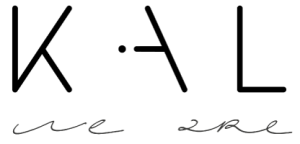What do efficiency, horses and learning have in common?
As you might know, we believe in simplicity - and this starts right at the origins. Supply chains often sound complex and products become hard to trace and their journey is lost on the road. We think that the supply chain is like the character of a product, it shapes its state in many ways. Some of you might wonder about how at we are KAL the story of our products is told. Others of you have already heard stories of our venturesome treks through the Himalayas, the origin of our supply chain. Either way, I would like to tell you the story of how we are sourcing our wool from Ladakh.

The month of July is one of my favourites in the year as the month is fully dedicated to the harvesting of the wool and the delivery of the wool to our team of weavers. Between the harvesting and the delivering are some days of magic, far up in the Changthang Plateau.

Collecting the wool, spending time with the nomad community in the mountains is a very different kind of life as we usually live. In 2015 when I went to Changthang to source wool for the winter, I thought about combining it with a trek with a tent and horses for carrying the wool. I am lucky to have a great friend, Tsering Angtak, who decided to join me - at his own risk! We planned our journey over 3 days, walking around 100 kms, with the company of 3 horses and Sonam, the horseman.

The first day was all about packing the wool and walking easily through the Changthang Plateau. We slept below the Taglang Pass and tackled its 5320m early in the morning on the second day. I surely was very exhausted after the climb and we slept in a village called Rumtse and continued on to Upshi on the 3rd day. Upshi is only around 1 hour car ride from the weavers place. This third day was intense. Instead of unpacking the wool from the horses (as of course, I imagined doing - and also taking plenty of photos!) I could not move from exhaustion and admitted that somewhere we went a bit too far. Nevertheless, people appreciated this extra effort but could not quite understand why we were doing this. 
Here I would like to add that sometimes it is not about efficiency but about experience. For us, the wool sourcing is not just a task but we made it into a learning, about the nature and ourselves. Certainly, it is part of the most precious memories. We sometimes have to remind ourselves that there is no need to always be rational and calculate which option brings most benefits in terms of numbers. However, it is necessary to take care of our health - that’s why 2016 brought an adjustment to our wool sourcing trek.

In 2016, I returned to Changthang to source the wool and luckily, was joined by Tsering Angtak once again. This year, we found a member of the nomad community who would accompany us with his horses – many thanks dear Urgyen!
In order to make the trek more enjoyable, we cut the 3rd day of the trip, the day of the most suffering. And what a great decision! We had a fantastic trek, a slow and steady climb up the Taglang Pass, lots of food and water (milky and meaty supplies from the nomads) and most of all, a great crew and three beautiful and strong horses.
Words cannot hold how wonderful it felt to be wearing the very first jacket of KAL during the sourcing of 2016, made from the wool of the first, painful and magical journey in 2015.
So to sum it up in a few words, we simply adapted to our surroundings. Transporting stuff on horses and yaks was normal for the nomads during times when cars were not used. Our intention is to do it in the old style, to take time, be among nice people and animals and do something from which we all benefit in the longterm.
Every beanie, scarf or garment made from our wool carries this special adventure in it.
No matter the growth of we are KAL, this way of transporting our wool will remain and we will just need more horses and volunteers :)
Thanks for reading,
Catherine


Leave a comment